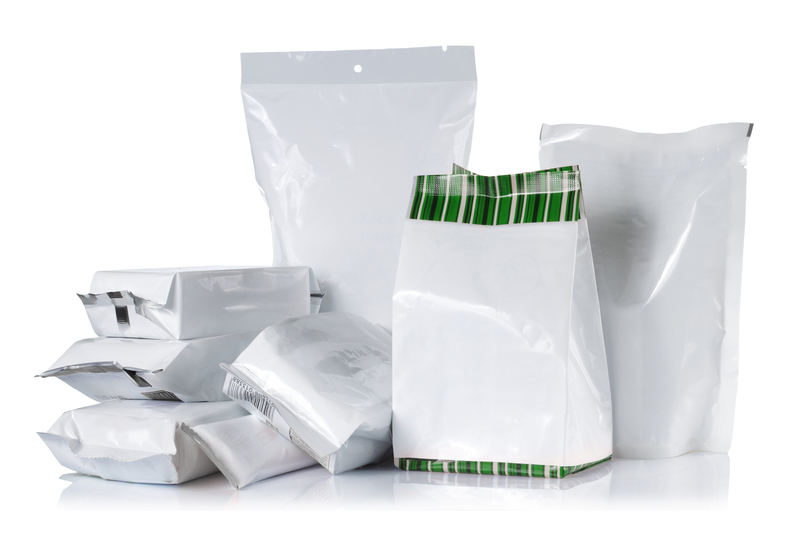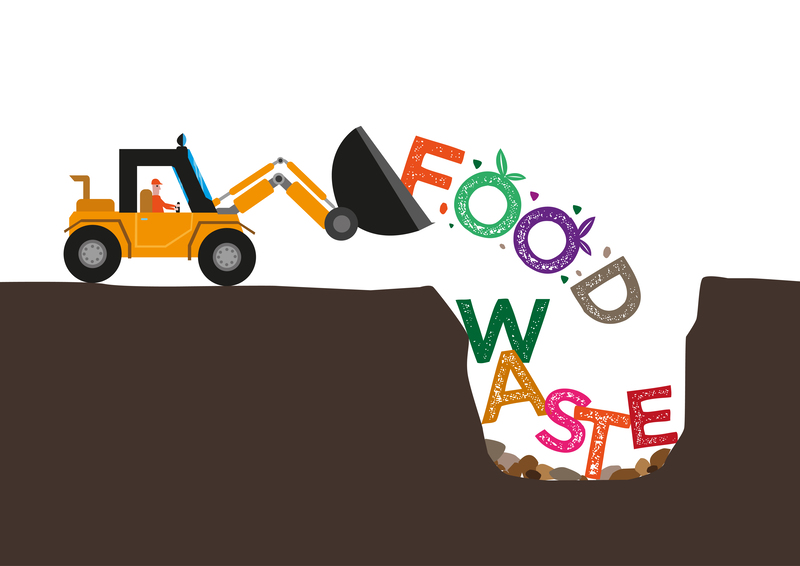Globally Recognized Hazardous Waste Types: An In-Depth Guide
Hazardous waste is a critical environmental concern facing communities and industries around the globe. Understanding globally recognized hazardous waste types is essential to mitigate health risks, environmental pollution, and legal consequences. This comprehensive article explores the various categories and subtypes of dangerous waste acknowledged internationally, regulatory frameworks, disposal methods, and the global impact of inadequate hazardous waste management.

What is Hazardous Waste?
At its core, hazardous waste refers to any discarded material--solid, liquid, or gas--that poses substantial or potential threats to public health and the environment. These wastes exhibit hazardous characteristics such as toxicity, reactivity, ignitability, or corrosivity. The definition may slightly vary across countries, but international bodies like the United Nations Environment Programme (UNEP) and the Basel Convention provide a standardized framework for their identification.
Key Characteristics of Hazardous Waste
- Toxicity: Causes harm to human health or the environment.
- Corrosivity: Can corrode metals or destroy living tissues on contact.
- Ignitability: Capable of catching fire easily under standard conditions.
- Reactivity: Unstable under normal conditions, causing explosions or emitting toxic gases.
Broad Classifications of Hazardous Waste Types
Globally, hazardous waste is broadly categorized based on its origin, physical state, and chemical composition. Understanding these internationally recognized hazardous waste categories is crucial for compliance, safety, and environmental protection.
1. Industrial Hazardous Waste
Industrial activity is among the largest contributors to dangerous waste streams worldwide. These wastes often contain a mix of chemical, biological, and physical hazards. Examples include:
- Solvent waste from paint, pharmaceutical, and electronics manufacturing.
- Heavy metals like lead, mercury, and cadmium found in battery and mining industries.
- Acidic and alkaline waste produced during chemical processing.
- Sludges and residues from industrial cleaning operations or wastewater treatment plants.
2. Household Hazardous Waste (HHW)
Even regular households generate a surprising amount of hazardous waste. Globally recognized household hazardous wastes include:
- Aerosol cans with flammable or toxic contents.
- Pesticides and herbicides used in gardens and homes.
- Paints, varnishes, and thinners.
- Drain and oven cleaners, polishes, and disinfectants.
- Batteries containing metals like lead, cadmium, and lithium.
- Electronics (e-waste): Computers, mobile phones, and TVs with hazardous components.
3. Biomedical and Healthcare Waste
Healthcare facilities generate various hazardous wastes, collectively known as medical or biomedical waste. International health regulations address these to prevent outbreaks and contamination:
- Infectious waste: Items contaminated with blood, body fluids, or other pathogens.
- Sharps: Needles, scalpels, and other items capable of causing cuts or punctures.
- Pharmaceutical waste: Expired, unused, and contaminated medicines.
- Genotoxic waste: Substances with mutagenic or carcinogenic properties (e.g., cytotoxic drugs).
- Radioactive waste: Generated by diagnostic or therapeutic medical equipment.
4. Electronic Waste (E-Waste)
The rapid pace of technological advancement has made e-waste one of the fastest-growing hazardous waste types globally. Typical components include:
- Printed circuit boards, batteries, and cathode ray tubes (CRTs): Often contain lead, cadmium, and brominated flame retardants.
- Old televisions and computer monitors: May release mercury or lead when improperly disposed.
- Cell phones and rechargeable batteries: Lithium and nickel-cadmium content pose fire and toxicity risks.
5. Agricultural Hazardous Wastes
Modern agriculture relies on many chemicals, a portion of which become hazardous waste:
- Pesticide containers and residues
- Herbicide leftovers and run-off fluids
- Veterinary medicines and animal treatment products
6. Construction and Demolition Waste
Construction and demolition activities produce hazardous waste through:
- Asbestos-containing materials: Used in insulation, roofing, and tiles.
- Lead-based paints and coatings
- Solvents, adhesives, and sealants
- Polychlorinated biphenyls (PCBs) in older electrical fittings and building components.
International Regulations and Conventions
Due to their transboundary impact, hazardous wastes are regulated internationally to ensure responsible management and minimize cross-border movement. Key frameworks include:
Basel Convention on the Control of Transboundary Movements of Hazardous Wastes
The Basel Convention is the premier global accord for controlling the movement and disposal of hazardous wastes. Under this treaty, hazardous waste types recognized worldwide are classified and catalogued in detailed annexes, covering:
- Waste streams (Annex I): List of common hazardous waste sources, such as clinical wastes and manufacturing residues.
- Specific hazardous constituents (Annex II): Identifies dangerous chemicals including heavy metals, solvents, and pesticides.
- Exclusions (Annex IX): Lists substances not considered hazardous under the convention for certain uses or conditions.
Stockholm Convention on Persistent Organic Pollutants (POPs)
The Stockholm Convention limits or bans persistent organic pollutants, many of which occur as hazardous waste, including:
- PCBs (Polychlorinated biphenyls)
- DDT and other banned pesticides
- Dioxins and furans
Other Notable Frameworks
- Rotterdam Convention: Regulates the international trade of certain hazardous chemicals and pesticides.
- OECD Control System: Facilitates environmentally sound management of hazardous waste among OECD nations.
- National regulations: Most countries have detailed regulations aligned with international treaties to recognize and manage hazardous wastes.
Main Chemical Classes of Hazardous Waste
Many internationally recognized hazardous waste types fall under specific chemical classifications, impacting how they are managed and treated.
Heavy Metal Waste
Heavy metals such as mercury, lead, arsenic, cadmium, and chromium are found in electronics, batteries, incinerator ash, and industrial emissions. These elements can be extremely toxic even at low concentrations and persist in the environment, causing chronic health problems and ecosystem damage.
Organic Hazardous Compounds
Organic hazardous wastes include:
- Solvents (e.g., benzene, toluene, xylene)
- Polychlorinated biphenyls (PCBs)
- Pesticides and herbicides
- Polycyclic aromatic hydrocarbons (PAHs)
Acids and Alkalis
Corrosive hazardous wastes, such as sulfuric acid, hydrochloric acid, sodium hydroxide, and ammonia, require specialized handling. Accidental releases can damage infrastructure, contaminate groundwater, and cause serious burns or respiratory harm.
Reactive and Explosive Chemicals
Unstable chemicals, often found in laboratories, munitions factories, and certain industries, may explode or release toxic gases. Sodium metal, perchlorates, peroxides, and nitrates are some prominent examples.
Disposal and Management of Hazardous Waste Globally
Effective hazardous waste management combines regulation, technology, and public awareness. The fate of globally recognized hazardous waste usually involves segregation, safe storage, treatment, and final disposal.
Primary Waste Treatment Methods
- Physical Treatment: Separation, filtration, and compaction to reduce volume and toxicity.
- Chemical Treatment: Neutralization, oxidation-reduction, precipitation of hazardous chemicals.
- Biological Treatment: Use of microbes to break down organic hazardous compounds, mainly in wastewater treatment plants.
- Incineration: High-temperature burning destroys organic toxins but requires emission controls for byproducts.
- Secure Landfilling: Specially engineered landfills isolate hazardous waste to prevent leaks and contamination.
International Best Practices
- Classification at Source: Accurate identification ensures appropriate management across all jurisdictions.
- Labeling and Tracking: Globally, hazardous waste containers must be properly labeled and tracked to prevent illegal dumping or accidental exposure.
- Transboundary Movement Controls: Cross-border shipments require prior notification, consent, and compliance with the Basel Convention regulations.
- Public Awareness and Training: Ongoing education reduces the risk of accidental exposure and encourages responsible disposal practices.
Common Examples of Globally Recognized Hazardous Waste Types
- Waste oils and solvents from automotive shops and factories
- Lead-acid and nickel-cadmium batteries
- Spent fluorescent lamps and other mercury-containing bulbs
- Expired pharmaceuticals and laboratory chemicals
- E-waste from discarded electronics
- Radioactive materials from hospitals and research centers
- Sludge from chemical manufacturing
- Asbestos-containing construction debris
- Pesticide-contaminated soils and containers

Environmental and Health Impacts of Improper Hazardous Waste Management
If not managed properly, hazardous waste can cause profound impacts:
- Groundwater and Soil Contamination: Persistent toxins leach into the environment, affecting drinking water supplies and agriculture.
- Air Pollution: Open burning and poor incineration release dioxins, furans, and particulates.
- Bioaccumulation and Food Chain Disruption: Toxins like mercury and PCBs concentrate in wildlife, eventually entering the human food supply.
- Acute and Chronic Health Risks: Ranging from chemical burns and poisoning to cancer, neurological issues, and birth defects.
Conclusion: The Global Need for Responsible Hazardous Waste Management
Recognizing and categorizing hazardous waste types worldwide is not only a legal requirement but a moral imperative for sustainable growth and planetary health. Global frameworks, technological advances, and public participation are essential in safely managing these dangerous materials and safeguarding future generations. As industries grow and urban populations expand, the responsibility to manage hazardous waste intelligently is more critical than ever.
Key Takeaways on International Hazardous Waste Types
- Hazardous waste recognition is governed by global treaties, including the Basel and Stockholm Conventions.
- Types of hazardous waste include industrial, household, medical, electronic, agricultural, and construction waste.
- Proper classification, storage, treatment, and disposal are essential for minimizing environmental and health hazards worldwide.
- Continued innovation, regulation, and education are key to managing hazardous waste sustainably.
For governments, industries, and communities, understanding the different globally recognized hazardous waste types is the first step toward a safer, cleaner future.